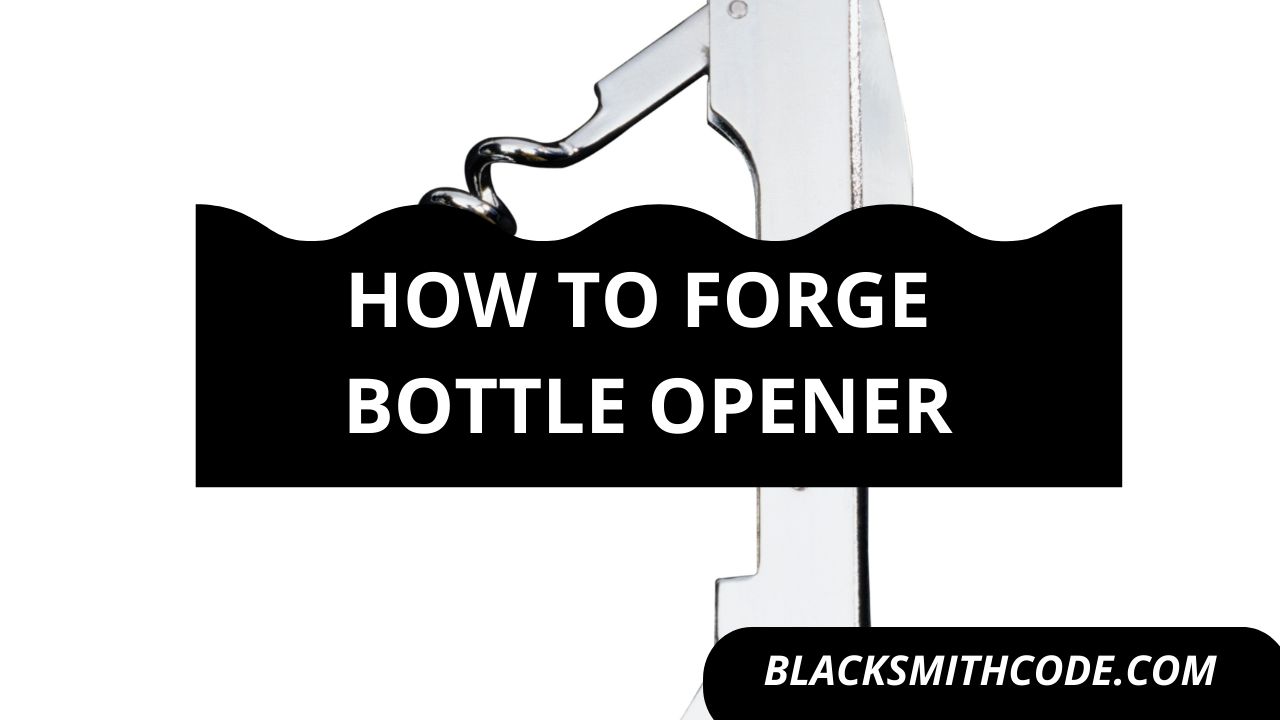Ever wondered how to forge a bottle opener in the blacksmithing shop? A bottle opener can be an essential tool in anybody’s shop, house, or even garage.
It has high utility, and it is convenient to carry about. It can be a perfect gift to a friend or even a priced asset at the bar. Buying a bottle opener might be easy, but forging it is even easier for the blacksmith.
Forging a bottle opener is quite easy, even for beginners. It only requires essential blacksmithing skills and techniques. You can learn how to form a bottle opener with the few easy steps below.
Instructions on How to Forge Bottle Opener
Step 1: Get Your Materials
First off, gather all the materials needed for the forging process. You can get a metal that already has a precise shape or collect scrap metal and beat it to shape. You can also get wires depending on the type of bottle opener you intend to forge.
Step 2: Square the Metal
The stage is crucial for those making use of scrap metal. This method requires heating your scrap metal together before beating it to give a square shape.
However, this step would not be necessary if you already have a round or square metal. It is only essential if you are trying to create the bottle opener from a scrap metal.

Step 3: Form The Shape
After the step above, you expect your material to have a precise shape already. Now, it’s time to form the shape of the opener. For this tutorial, we will be forging the 8-shaped opener.
Quick Steps
To form this shape, you have to be careful and patient.
- Heat the metal to a workable temperature.
- Hold the tip of the iron over the edge of the anvil.
- Form the first loop of the 8-shape and hammer it down.
- Form the curve of the upper side of figure 8.
- Reverse the bottom of the metal and form the second curve.
- Don’t panic if you didn’t get the perfect 8-shape. You, however, have to be patient to re-heat the metal again and work on it.
Step 4: Form The Hook
The hook of an opener is an essential part of the tool, so, you should pay attention when forging a bottle opener. It is the part of the device that allows it to carry out most, if not all, of its functionalities. The process is quite easy.
Quick Steps
- Flatten the edge of the metal. The length of the steel for the hook should be half the length of the one you use in forming your figure 8.
- Hammer down the edge until you have an even flat side.
- Once you have a flat, also, and straight edge, tamper the metal a little bit. The essence of the tampering is to allow the tip of the hook to quickly reach for beneath the bottle cap and have a firm grip.
- After tampering, cure the edge of the metal to form a loop. This edge will create the hook of the opener.
- Form another larger circle at the other end of the metal. This site might not need tampering.
- This other loop should be large enough to wrap itself around the edge of one side of figure 8.
- You can keep using your formed eight as a reference to help you create a perfect loop.

Step 5: Attach The Two Components
By now, you should have two components of the bottle opener. The first component is the forged figure 8 metals. The second component is the steel that contains the hook and the loop.
Once you recognize the two components, now it’s time to join them together.
Quick Steps
- Heat the loop that will go around the base of the 8-shape
- Fix it around the 8-shape and hammer down to hook.
- Once the loop starts bending around the bottom of figure 8, let it down on the tip of the anvil horn and keep hammering.
- Ensure that this hook sits flat without distorting the shape of the figure-8 or bending the hook.
- To ensure the proper attachment, you can either weld the point of the joint between the figure-8 and the other steel.
- Alternatively, you can make use of 12 AWG copper wires to keep it attached.
- Wrap the wire tightly ground the point of attachment and slightly hammers down.
Step 6: Cleaning, Signing, and Finishing
The essence of this step is to ensure that your work is neat enough. Also, it will help you to customize your wok.
Quick Steps
- Grind off the welding slags with the use of files and Dremel grinder. You might need this if you choose the method of 12AWG wire over the welding.
- You can decide to inscribe a small symbol as your custom signature.
- Choose the finishing that best suit you. I recommend the thin brass coating finish.
- Proceed with your finishing process until you are satisfied with the outcome.
- Rapidly quench the bottle opener once you are through with your finishing.
FAQs on How to Forge Bottle Opener
Question
How long does it take to forge a bottle opener?
Forging a bottle opener is not time-consuming. It is even faster if you employ the right technique and choose a simple design. You can complete the forge a bottle opener within 1-2 hours.
Question
Is there a standard shape for the bottle opener?
There is no standard design for a bottle opener. All you need is to integrate the critical component and forge it in a manner that makes it handy. The key elements are the hook and a suitable handle.
You should, however, consider the tool’s utility and durability while considering the shape of the bottle opener.
Question
Can I create a bottle opener from scrap?
Yes. You can forge a bottle opener from scrap. However, you have first to form the scraps together to give you a precise shape.
Video
Warnings
The following precautions will help you get suitable results and guarantee your safety during the forging process.
- Handle the forge with care to avoid burn.
- Be careful while hammering the opener not to distort the hook or the overall shape.
- Use your protective gear and other safety equipment for the forging process.
References
1. https://www.instructables.com/id/How-to-Forge-a-Bottle-Opener/
2. https://www.instructables.com/id/Hand-Forging-a-Skeleton-Bottle-Opener-a-Comprehens/
3. http://www.stormthecastle.com/blacksmithing/how-to-forge-a-bottle-opener.htm
4. https://www.popularmechanics.com/home/a20080/forging-a-bottle-opener-from-iron/




